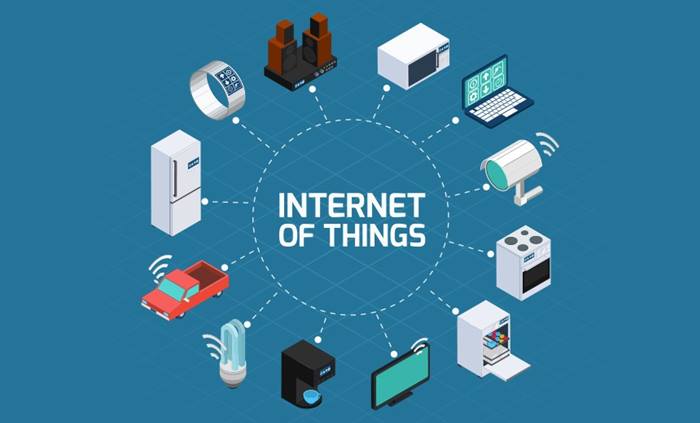The way we live, work, and interact with the world around us is being revolutionized by the Internet of Things (IoT), a rapidly developing technology.
IoT, or the Internet of Things, is the simple term for the process of connecting physical objects, such as computers, appliances, cars, and other machinery, to the internet in order to enable communication and data exchange.
The limitless potential of IoT
IoT has an almost limitless range of possible uses, from self-driving cars that can talk to one another to avoid collisions and improve traffic flow to smart houses that automatically alter the temperature and lighting to meet your preferences.
Additionally, industrial machinery, power systems, and even entire cities are being monitored and managed via IoT technologies.
IoT can acquire and analyze enormous amounts of data from connected devices, resulting in insightful information and enabling more effective and efficient decision-making.
This is one of the main advantages of IoT. IoT devices, for instance, can gather real-time data on patients’ vital signs and transmit it to medical staff, enabling quicker and more precise diagnosis and treatment.
The importance of security and privacy
Like with any new technology, there are worries about security and privacy.
It is essential that appropriate security measures are put in place to guard against hacking and other types of cyberattacks, given the large number of connected devices gathering and transferring sensitive data.
Advantages of IoT
Despite these difficulties, the advantages of IoT are too great to ignore.
In the years to follow, we can anticipate seeing even more cutting-edge applications and use cases emerge as the technology continues to develop and mature.
It is crucial to be informed and involved with this fascinating and quickly changing industry, whether you are a customer, a business owner, or a policy leader.
IoT’s Advantages and Challenges: A Detailed Study of the Pros and Cons of the Technology
On the plus side, IoT has the promise of revolutionizing a variety of elements of our daily lives, from enhancing home security to increasing energy effectiveness and lowering waste.
We can use our smartphones to remotely manage and monitor our home’s appliances, lights, heating, and security systems thanks to IoT gadgets.
IoT sensors may identify and warn workers of potential hazards in factories and other industrial settings, improving safety and productivity.
Because businesses may use the data collected from IoT devices to build new goods and services, IoT also has the potential to open up new business prospects and revenue streams.
Companies can, for instance, study client behavior and preferences using data from IoT devices to create products and services that are tailored to their needs.
Security and privacy concerns
Yet, there are also some possible downsides to IoT technology. The topic of data security and privacy is one of the most important worries.
There is a chance that the vast amount of data being gathered and delivered by connected devices will be intercepted or compromised by bad actors.
Serious invasions of one’s privacy or even financial harm could result from this.
Dependence on technology
The danger of becoming too dependent on technology is another possible problem.
There is a chance that we could lose some of our fundamental problem-solving and critical-thinking abilities as we become more dependent on IoT gadgets.
Furthermore, there is a chance that we will become overly dependent on technology, which could result in us losing control over crucial facets of our lives.
Even though IoT technology undoubtedly has the ability to provide a variety of advantages, it is crucial to take into account any negative effects and difficulties this technology may present.
We can fight to ensure that this technology is developed and utilized in a responsible and sustainable fashion that benefits us all by remaining informed and actively participating in the continuing conversation around IoT.
Precautions for personal data privacy and protection
Putting in place robust privacy and security safeguards is one method to reduce the potential risks connected to the IoT.
This can involve the protection of sensitive data using encryption and other security protocols, as well as the development of strong authentication mechanisms to guarantee that only authorized users can access IoT devices and systems.
Industry standards and best practices
Establishing industry standards and best practices for IoT development and implementation is another possible approach.
We can ensure that IoT devices are created with security and privacy in mind from the beginning rather than as an afterthought by cooperating to create and enforce these standards.
The ongoing debate on IoT’s merits and cons
Ultimately, the merits and cons of IoT will continue to be a matter of debate and discussion in the years to come.
Although there are undoubtedly drawbacks to this technology, it also has a great deal of promise to enhance our quality of life and open up new doors for growth and creativity.
We can contribute to ensuring that IoT is developed and deployed in a responsible and sustainable fashion that optimizes its benefits while reducing its hazards by keeping up with the most recent advances in the field.
It is critical to be informed about this fascinating and quickly developing subject, whether you are a consumer, a business owner, or a policy official, and to collaborate in order to reach its full potential for the good of all.
Learn more about Home Network Security
